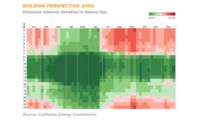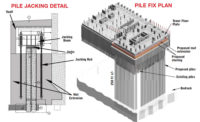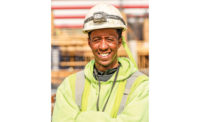ENR 2018 Top 25 Newsmakers
Andres Lepage: Laying the Foundation for Historic Code Changes to Reduce Rebar Congestion

Tests at the University of Kansas, led by Lepage (second from left, standing), prove that concrete with Grade 100 rebar can withstand very large lateral deformations without significant strength loss.
PHOTO COURTESY ANDRES LEPAGE/UNIVERSITY OF KANSAS
Born in Venezuela, U.S. citizen Andres Lepage considers his adopted homeland the “best country in the world.”
Though he had an idyllic childhood in Maracaibo during the oil boom of the 1970s, he left his native nation in early 1992 to get a doctorate in civil engineering at the University of Illinois, Champaign-Urbana. “When I came to the U.S., there was so much political tension in Venezuela,” says Lepage, who hasn’t returned there since 2005.

As a boy, Lepage was impressed by life in the U.S. after his father packed up the family and moved to Santa Monica in 1974 to get a doctorate at the University of California. After his return to Maracaibo a year later, the young Lepage kept up his English by reading magazines such as Sports Illustrated. In college, he bought English-language editions of most of his engineering textbooks.
“I didn’t speak English well, but I knew how to read it,” he says, adding that he is still working on his pronunciation.
In 1996, after getting his PhD in Illinois, Lepage moved to Seattle to practice seismic design. But after a decade, he became frustrated by the limits of practice, in part due to building codes. “I loved my years as a practicing engineer but I had the itch to teach,” he says. “And to change the code, we needed testing and research, and I couldn’t do that at my desk.”
In 2006, Lepage jumped the fence into academia to tackle the problem of rebar congestion in concrete structures in seismic zones, exacerbated by limits on the use of high-strength reinforcement.
Thanks to tests at the University of Kansas on T-shaped shear walls and coupling beams championed by the engineering professor, code change is in the air. Lepage’s research team recently demonstrated that shear walls reinforced with 100-ksi rebar, also known as Grade 100 reinforcement, can withstand very large lateral deformations without significant strength loss.
“With his dedication to wall research and with his committee work, the American Concrete Institute is on the brink of approving the use of Grade 100 reinforcement in special structural walls,” says Dominic Kelly, a senior principal of engineer Simpson Gumpertz & Heger and chair of the ACI subcommittee on high-strength rebar.
Lepage has more up his sleeve. “Why stop at Grade 100?” he asks. “Why not 120, 150 or 180?”
Beyond that, he wants to marry high-strength concrete to high-strength structural steel.
“There’s a lot of work to be done,” he says.





